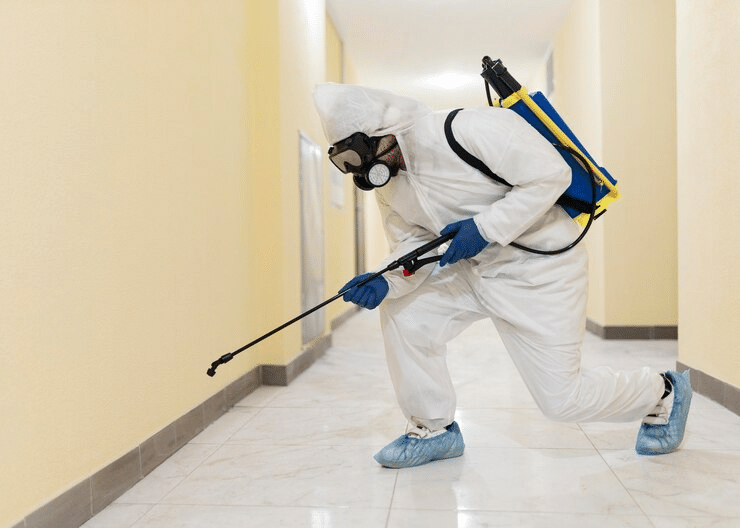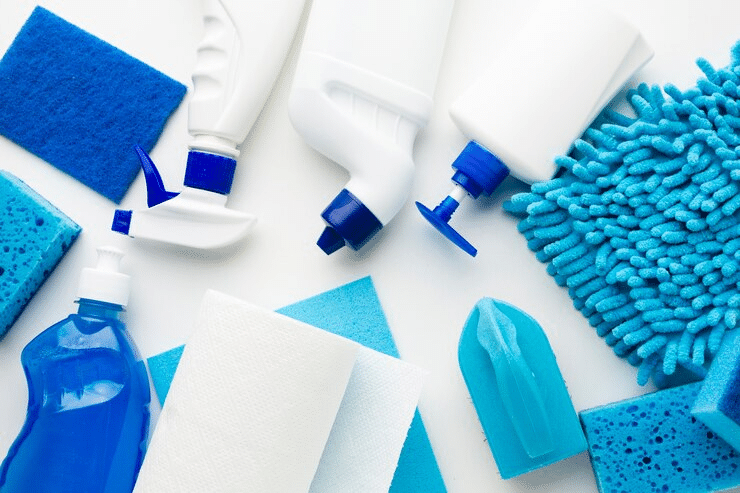In today’s environmentally aware society, many homeowners seek ways to make their homes safe and efficient while minimizing their ecological footprint.
By adopting eco-conscious choices, you can create a living space that is not only comfortable but also sustainable.
Let’s explore some of the most effective ways to achieve this, focusing on renewable energy and modern pest management solutions.
Solar Energy for a Sustainable Home
One of the most impactful changes you can make is integrating solar energy into your home.
Utilizing solar energy systems significantly reduces reliance on traditional energy sources and offers substantial savings on electricity bills.
Solar panels convert sunlight into electricity, providing a renewable, clean energy source that lowers your carbon footprint.
This move towards sustainable living is essential for protecting the environment and ensuring a brighter future for the next generations.
Modern Pests Management Methods

Keeping your home free from pests is crucial for maintaining a healthy and comfortable living environment.
Modern methods for managing pests at home incorporate advanced technology to efficiently detect and eliminate pests.
These systems use sensors and automated responses to ensure pests are kept at bay without the constant need for chemical treatments.
This innovation provides a safer, cleaner home environment while minimizing the impact on the ecosystem.
| Pest Prevention Tip: The most effective strategy for controlling pests is to combine methods using an approach known as Integrated Pest Management (IPM). IPM utilizes information about pests and available control methods to manage pest damage economically while minimizing risks to you, your pets, and the environment. |
|---|
Eco-Friendly Cleaning Products

Switching to eco-friendly cleaning products is an easy and effective way to reduce your household’s environmental impact.
These products are made from natural ingredients that are biodegradable and non-toxic, ensuring they are safe for both your family and the planet.
Using green cleaning products helps to maintain a healthy indoor environment while reducing pollution and chemical waste.
Here are some examples:
Vinegar and Baking Soda
These two pantry staples are incredibly versatile. Vinegar can disinfect surfaces and cut through grease, while baking soda is perfect for scrubbing and deodorizing. Together, they can tackle almost any cleaning task.
Castile Soap
This plant-based soap is gentle yet effective. Consider diluting it with water to create an all-purpose cleaner that you can use on countertops, floors, and even as a dish soap. It’s biodegradable and free from synthetic detergents and preservatives.
Essential Oils
Adding a few drops of essential oils like tea tree, lavender, or lemon to my cleaning solutions not only boosts their cleaning power but also leaves my home smelling fresh.
Tea tree oil, in particular, has natural antibacterial properties.
DIY Cleaning Solutions
You can also create your own cleaning solutions. Below are a few examples.
All-Purpose Cleaner: Mix 1 part water, 1 part vinegar, and a few drops of essential oil in a spray bottle. This works great on most surfaces.
Glass Cleaner: Combine 1 part vinegar, 1 part water, and a teaspoon of cornstarch. Shake well before each use for streak-free windows and mirrors.
Reusable Cleaning Tools
To further reduce waste, use reusable cleaning tools like microfiber cloths, which are excellent for dusting and wiping down surfaces.
They’re washable and can be used multiple times, unlike disposable paper towels.
| Warning: Just because a product is labeled as “green” or “natural” doesn’t mean it is free of harmful ingredients. Look for logos that indicate a product is safer for home use, such as “Safer Choice,” “Green Seal Certified,” “Made Safe,” and “EWG Verified (Environmental Working Group).” |
|---|
LED Lighting Over Traditional Bulbs

Upgrading to LED lighting is another excellent way to improve home efficiency.
LED bulbs use significantly less energy than traditional incandescent bulbs and have a much longer lifespan.
This means you will not only save on energy bills but also reduce the frequency of bulb replacements, leading to less waste.
LED lighting is an easy and impactful way to contribute to a more sustainable home.
Here are some of the key advantages:
Energy Efficiency
LED bulbs use up to 80% less energy than incandescent bulbs. This means lower electricity bills and a reduced carbon footprint. For example, a 10-watt LED bulb can produce the same amount of light as a 60-watt incandescent bulb.
Long Lifespan
One of the most impressive features of LED bulbs is their longevity. They can last up to 25,000 hours or more, compared to just 1,000 hours for incandescent bulbs. This means fewer replacements and less waste.
Environmental Impact
LEDs are much more environmentally friendly. They contain no toxic elements like mercury, which is found in fluorescent bulbs. Additionally, their long lifespan means fewer bulbs end up in landfills.
Durability
LED bulbs are incredibly durable and can withstand rough conditions. They are resistant to shock, vibrations, and external impacts, making them ideal for outdoor lighting and areas prone to temperature fluctuations.
Instant Lighting
Unlike some other types of bulbs, LEDs light up instantly to full brightness without any warm-up time. This is particularly useful in areas where immediate illumination is needed, such as stairways and closets.
| Fun Fact: LED lights produce a bright, clear light that outperforms other comparable light sources. |
|---|
Geothermal Heating and Cooling
Geothermal heating and cooling systems offer an energy-efficient alternative to traditional HVAC systems.
These systems utilize the stable temperatures underground to heat and cool your home, providing consistent and reliable climate control year-round.
Geothermal systems are highly efficient, reducing energy consumption and lowering utility bills while minimizing your home’s carbon footprint.
Geothermal systems take advantage of the relatively constant temperature below the earth’s surface.
Here’s a step-by-step look at how it operates:
Ground Loops
These are pipes buried in the ground near your home. Depending on the available space and soil conditions, they can be installed horizontally or vertically.
Heat Exchange
A fluid (usually a mix of water and antifreeze) circulates through the ground loops, absorbing heat from the earth in the winter and releasing heat into the earth in the summer.
Heat Pump
The fluid then moves to a heat pump inside your home. In the winter, the heat pump extracts the heat from the fluid and distributes it throughout your home.
In the summer, the process is reversed. The heat pump removes heat from your home and transfers it to the fluid, releasing it into the ground.
Take Action for a Greener Home
These eco-conscious choices can significantly enhance your home’s safety and efficiency while contributing to a more sustainable future.
By integrating solar energy, modern pest management, smart thermostats, eco-friendly lighting, advanced security systems, and smart HVAC solutions, you create a comfortable, efficient, and environmentally friendly living space.
Start implementing these technologies today to improve your quality of life and help protect our planet.
